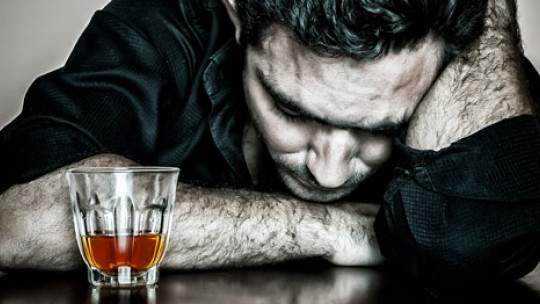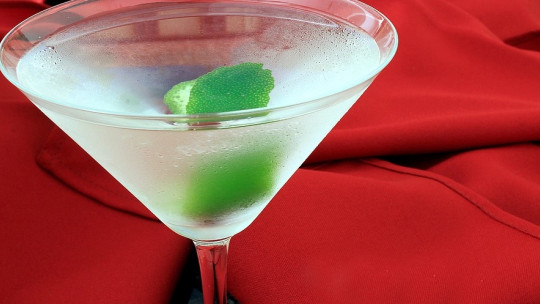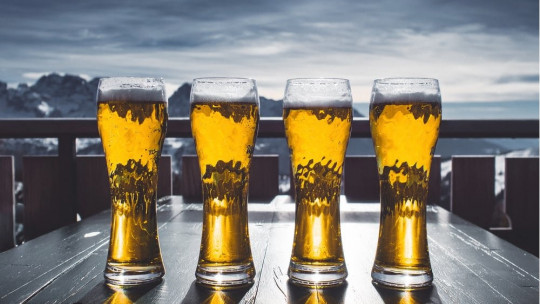
Throughout history, society has assimilated the consumption of alcoholic beverages, becoming a characteristic of some cultures. It is something that can be observed at parties, concerts and discos, traditions, as part of the leisure habits of youth and even in the popularity of phenomena such as bottles.
However, it must be taken into account that alcohol consumption can generate addiction, with the drinker losing control over intake, which generates dependence on the substance. And this dependence is not only expressed through substance abuse, but also through signs and symptoms that appear when you stop drinking alcohol. Among the most serious phenomena of alcohol withdrawal is delirium tremens Let’s see what it consists of.
The mechanics of withdrawal
Once a dependency has been generated, The fact of removing the object on which one is dependent causes withdrawal syndrome, that is, the absence of the substance in the body causes symptomatic reactions. That is why in many cases ending alcoholism is not as simple as removing the possibility of consuming these types of drinks once and for all. The lack of this substance also produces a series of symptoms that can sometimes be dangerous in themselves.
Generally, the opposite effect is produced to that caused by the substance, which means that in the case of a depressant substance (such as alcohol) manic-type symptoms will occur, while in the case of exciting substances the withdrawal syndrome will consist of a decrease in the general activity of the body. In any case**, the withdrawal of the desired substance must be controlled**, since too abrupt a cessation of supply can cause these syndromes.
Among the withdrawal syndromes related to alcohol abuse, the one considered the most serious is the so-called delirium tremens.
What is delirium tremens?
It is called delirium tremens. acute confusion produced by alcohol deprivation It is caused by the cessation of alcohol intake in chronic drinkers who have developed physical dependence, and frequently appears after between 4 and 72 hours of abstinence.
Although delirium tremens usually occurs in patients who stop drinking after excessive alcohol consumption, it is possible to find cases in which this syndrome has been caused by illness, trauma or infections in individuals with heavy alcohol consumption in the past.
Symptoms of delirium tremens
The main symptoms of this syndrome are a disintegration of consciousness in which visual hallucinations, delusions, emotional lability and stupor appear Tremors, psychomotor agitation and seizures are also common.
Generally, delirium tremens has a short duration, but regardless of this it is a dangerous syndrome, since 20% of cases are fatal if medical attention is not received, and even with this, 5% of cases end. in the death of the patient.
Phases of delirium tremens
In the first phase, vegetative symptoms such as anxiety, tachycardia, dizziness, restlessness and insomnia begin to be observed, caused by a rise in norepinephrine in the blood. If the second phase is reached, around 24 hours after its appearance, The intensity of the above symptoms increases, with uncontrollable tremors and intense sweating Seizures may also occur.
Finally, in the third phase (defining delirium tremens), a state of altered consciousness called obtundation appears. This is defined by the propensity for distractions and confusion, along with profound disorientation. The most characteristic of this phase is the appearance of visual hallucinations (usually microzoopsias) and delusions, along with a heightened sense of anguish. Likewise, agitation, tachypnea, hyperthermia and tachycardia also occur.
Possible treatments
Taking into account that delirium tremens is a problem that can cause the death of the patient, immediate hospitalization is required for those who present the symptoms described, and admission to the ICU may be necessary.
The basic objectives of the treatment to be applied will be to keep the patient alive, avoid complications and relieve symptoms. Thus, the surveillance of the affected person will be constant, observing their hydroelectric balance and vital signs.
Although the specific measures will depend on the case, the administration of diazepam, loracepam and dipotassium cloracepate to achieve sedation of the patient, hydroelectrolyte control in order to maintain hydration of the affected person and administration of vitamins to maintain correct functionality are frequently applied. of the organism. In addition, Haloperidol is also usually applied to control the psychotic process and hallucinations
A final consideration
Although excessive alcohol consumption is a dangerous phenomenon, and those who stop using it do so for good reasons, it is necessary that those who decide to give up alcohol take into account the physical dependence that their body maintains on that substance.
It is essential in cases of addiction or substance consumption for a long time (including medications such as tranquilizers or antidepressants), that the withdrawal of the substance occurs gradually, since in the initial stages the body needs a certain dose of the substance. substance to continue functioning properly.
Furthermore, it is worth remembering that the type of health dangers associated with delirium tremens can be avoided. detecting cases of alcohol addiction in time, which makes it possible to close the path to alcoholism in time. The use of this type of beverage is socially widely accepted and widespread in all types of contexts, and that is why detecting its first signs can be complicated, given the degree of normalization of the abuse of these substances.
To know some of the signs that indicate the presence of the beginnings of alcoholism, you can read this article: “The 8 signs of alcohol addiction.”








